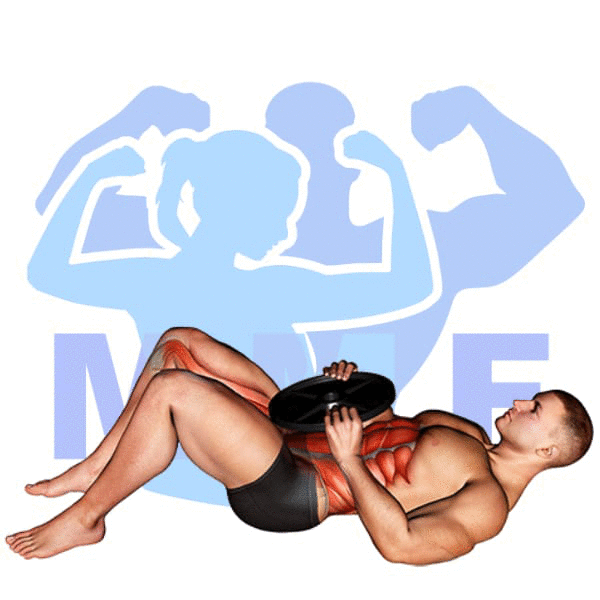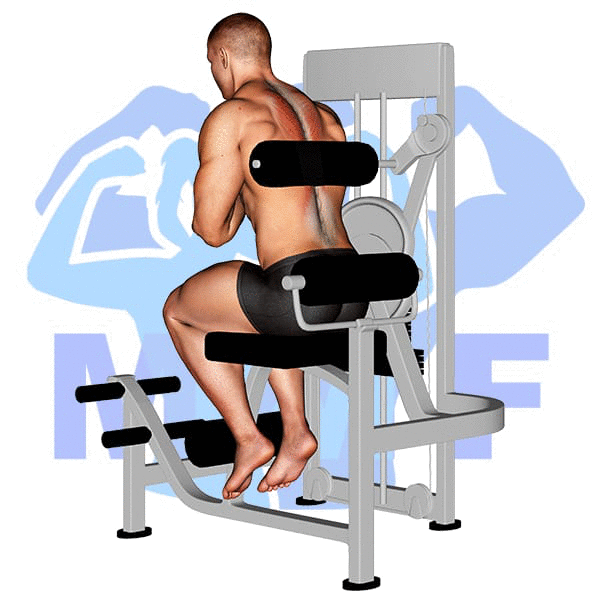Are you someone who struggles with building strength in your legs despite doing the barbell forward lunges? Don’t worry, you are not alone. One common cause of this problem can be poor form and lack of knowledge about how to properly execute this exercise. It can be frustrating to put in the effort and time but not see the results. But fear not, with the right guidance and technique, you can take your barbell forward lunge to the next level and build some serious leg strength. In this blog, we will be discussing the common mistakes made during the barbell forward lunge and provide easy-to-follow steps to help you perfect your form and get the most out of this exercise.
Barbell Forward Lunge Summary
- Primary Muscles: Gluteus Maximus
- Secondary Muscles: Adductor Magnus, Quadriceps, and Soleus
- Equipment: Barbell
- Mechanics Type: Compound
- Force: Push
- Utility: Basic or Auxiliary

Barbell Forward Lunge Instructions
- Set up for your forward lunges by loading a bar on a rack and placing it on the back or your shoulders similar to setting up for squats.
- Unrack the bar and setup yourself so that you have room to step forward into the lunge.
- Start with your feet under your hips, then step forward with one leg about twice the length of your normal walking step.
- Now, lunge down so that your back knee gets close to but does not touch the ground.
- Then, press back up with enough force that you can step your front leg back to the starting stance.
- Repeat by alternating each leg until you do 8-12 reps on each side.
Video Tutorial
Barbell Forward Lunge Muscles
Target (Agonist)
Synergists
- Adductor Magnus
- Quadriceps
- Soleus
Dynamic Stabilizers
Stabilizers
- Erector Spinae
- Gluteus Medius
- Gluteus Minimus
- Levator Scapulae
- Obliques
- Quadratus Lumborum
- Tibialis Anterior
- Trapezius – Middle
- Trapezius – Upper
Antagonist Stabilizers
- None

Benefits of Barbell Forward Lunge
The Barbell Forward Lunge is a great exercise for targeting the gluteus maximus, a large muscle in the buttocks. This exercise not only strengthens the glutes, but also helps to increase balance, stability, and flexibility. Furthermore, it is an excellent way to work on proper posture and form while performing squats and other exercises. The Barbell Forward Lunge also engages the entire lower body, including the quads, hamstrings, and calves, and is a great addition to any strength training or fitness routine.
Tips for Performing Barbell Forward Lunge
Now that you understand the proper technique for the barbell forward lunge, here are a few tips that can help you get the most out of this exercise and make sure that your form is spot on.
- Deciding On Your Recovery Time That It Is Short, Yet You Are Able To Continue To Finish A Solid Entire Set. Every time your break period is too small you could possibly not be able to complete your complete set, in the event that it is way too prolonged you can be just being inefficient.
- help reduce soreness by carrying out only a few minutes of cardio exercise targeting your target muscle groups at the end of your routine. This cardio is truly flushing out most of the lactic acid. Therefore you will undoubtedly be improving your recovery.
- Do your primary compound lifts first of your workout, after that complete isolation lifts to concentrate on distinct muscles afterward. You need the optimum capabilities of your individual muscles any time you perform compound movements such as bench, deadlift, and squats. Next, you need to focus on the muscle groups of which you determined were weak during those exercises, or regions that couldn’t get fatigued due to the type of compound movement you performed.
Benefits and Tips Video
Frequent Mistakes To Avoid
When it comes to any exercise, it is important to perform the movements correctly. Otherwise, you can injure yourself and limit the effectiveness of the exercise. With that in mind, here are some common mistakes to avoid when performing a Barbell Forward Lunge.
- Don’t Relax Your Abs. Keeping your stomach tight to protect your spinal column by maintaining your internal pressure.
- Stop Yourself From Using To Little or Too Much Resistance. Too little, and you will not be adequately using your target muscles, too much, and you’ll most likely need to cheat. Make sure you concentrate on your technique.
- You’ll Do Better To Not Attempt To Lift More Weight Than You Can Do Properly. You are likely to forfeit your form and could lead to an injury any time you make an effort to use more than you should.
Find More Barbell Exercises Here
Variations and Complementary Exercises
If you’re looking to mix up your workout routine, here are some alternative, complementary, and variations exercises to the Barbell Forward Lunge that can help build strength in similar muscles.
Barbell Lateral Lunge

The Barbell Lateral Lunge is a great complementary or alternative exercise to the Barbell Forward Lunge. It works on the same muscles as the forward lunge, but with a different movement. It involves stepping out to the side instead of forward, and then lunging down with the knees, keeping your torso upright. This exercise targets the glutes, quads, and hamstrings, just like the forward lunge. The lateral lunge also strengthens the abductors and adductors, giving the legs a balanced and toned look.
Barbell Rear Lunge

Barbell Rear Lunge is a great complementary or alternative exercise to Barbell Forward Lunge. It works the same muscles in the legs, but in a different way. This exercise requires you to take a step backward with one leg, keeping your torso upright, and lower yourself until your front knee is bent at a 90-degree angle. Then, push off with the back leg and return to the starting position. The Rear Lunge helps to strengthen your hip flexors and quads, while also improving your balance and coordination. It is an effective exercise for building strength and power in the lower body, as well as a great way to improve overall athleticism.
Barbell Reverse Lunge

The Barbell Reverse Lunge is an effective complementary or alternative exercise to the Barbell Forward Lunge. It works the same primary muscles as the Barbell Forward Lunge, but in a slightly different way. The Barbell Reverse Lunge requires the lifter to stand with feet hip-width apart and hold a barbell across the back of the shoulders. Then, the lifter takes a large step backward with one foot and lowers into a lunge, bending both knees until the back knee nearly touches the ground. The lifter then rises back up and returns to the starting position. This exercise is a great way to add variety to a workout routine while still targeting the same primary muscles as the Barbell Forward Lunge.
Check Out These Top Barbell Exercises
Barbell Walking Lunge

Barbell Walking Lunge is a great complementary exercise to Barbell Forward Lunge, as it allows the user to target different muscles and increase muscular endurance. Unlike the Barbell Forward Lunge, which focuses on a single leg at a time, Barbell Walking Lunge requires the user to lunge forward with one leg while simultaneously walking forward with the other. This dynamic motion engages more muscles throughout the body and increases the intensity of the workout. Additionally, Barbell Walking Lunge is an excellent alternative to Barbell Forward Lunge if the user is seeking to further challenge their balance and stability.
Dumbbell Lunge

Dumbbell Lunge is a great complementary or alternative exercise to Barbell Forward Lunge. This exercise works the same muscles as the Barbell Forward Lunge, but it places less stress on the lower back and core. By holding the dumbbells in each hand, you can also engage more of your stabilizing muscles for better balance and core strength. To do this exercise, start with your feet hip-width apart and hold a dumbbell in each hand. Step forward with one leg and lower into a lunge position, making sure to keep your chest up and core engaged. Push off with the front leg and return to the starting position. Repeat on the other side for one set.
Dumbbell Rear Lunge

The Dumbbell Rear Lunge is a great complementary or alternative exercise for the Barbell Forward Lunge. It is performed in the same manner as a forward lunge, but instead of stepping forward, you step backward. This exercise will help to target the same muscles as a forward lunge, but with the added challenge of having to balance on one leg. It also helps to strengthen the glutes, hamstrings, and quads, as well as improve balance and coordination. The Dumbbell Rear Lunge can be used as a standalone exercise, or in combination with other exercises to create an effective and balanced workout.
Find More Glutes Exercises Here
Opposing Complementary Exercises
In order to further strengthen the muscles used in the Barbell Forward Lunge, it is important to work the opposing muscle groups. The following exercises target the opposing muscle groups used in this exercise and can be done in addition to the Barbell Forward Lunge to achieve optimal results.
Barbell Squat to Shoulder Press

The barbell squat to shoulder press is a great exercise for building strength and power in the lower body. It is complementary to the barbell forward lunge, which works the opposing muscle group of the lower body. The squat to shoulder press requires you to use your legs and core to move the barbell up and down while simultaneously pushing your shoulders and arms up. This exercise not only strengthens the glutes and quads but also engages the core, back, and shoulder muscles. It’s an excellent way to build overall body strength and balance.
Barbell Sumo Squat

The Barbell Sumo Squat is a great complement to the Barbell Forward Lunge. It works the same muscles in the legs and hips, but in the opposite direction. The Barbell Sumo Squat focuses on the quadriceps, glutes, and inner thighs while the Barbell Forward Lunge works the hamstrings and outer thighs. This combination of exercises can help build balance, stability, and strength throughout the lower body. Additionally, it will help to improve balance and coordination by engaging the opposing muscle groups.
Barbell Zercher Squat

The Barbell Zercher Squat is a fantastic exercise that complements the Barbell Forward Lunge. This exercise targets the quadriceps, hamstrings, glutes and lower back. The Barbell Zercher Squat requires the lifter to hold the bar in the crook of their elbows and squat down to a parallel position. By using the opposing muscle groups, this exercise allows the lifter to develop strength in both the front and back of their legs. Furthermore, it helps to balance out the muscle development between the two exercises. The Barbell Zercher Squat is an excellent exercise to add to any lower body workout routine.
Level Up Your Lunges: Master the Barbell Forward Lunge
Ready to level up your lunges? One of the best ways to do so is by mastering the barbell forward lunge. This variation adds an extra challenge by incorporating the use of a weighted barbell, helping you to build strength and muscle in your legs and glutes. By perfecting your form and gradually increasing the weight, you’ll be able to take your lunge game to the next level. Plus, with the added resistance, you’ll burn even more calories and see results even faster. Get ready to feel the burn and see the gains with the barbell forward lunge.
References: Wikipedia | ExRx.net | PubMed.gov | Comprehensive List of Glutes Barbell Exercises




